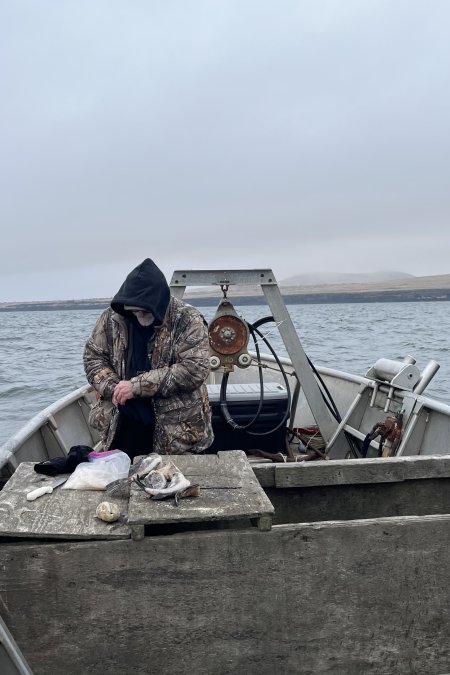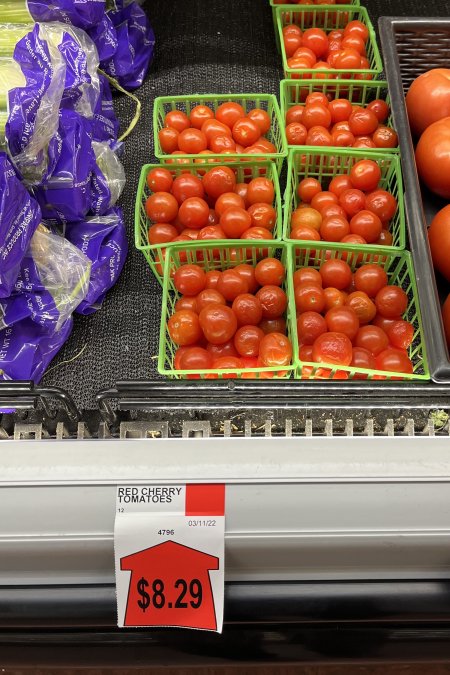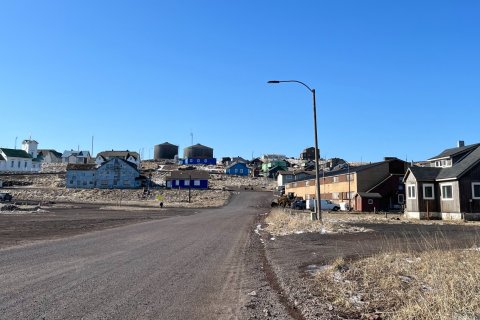Why research must equitably include Indigenous communities to reach a truly sustainable future
St. Paul Island is one of the most remote islands in Alaska. Far out in the Bering Sea about halfway between the USA and Russia, it is a place where summer temperatures barely hit 10 degrees.

Food insecurity is a daily and burning issue on St. Paul, which is home to Indigenous Aleut, or Unangan people. The Arctic island is so isolated that everything in the local shops must be flown in from the mainland. Shipping costs are prohibitively expensive, and since the community is small and the demand so low, it is difficult for the island’s store to buy in bulk and negotiate lower prices with their vendors.
Wildlife populations on St. Paul are also in decline, making it increasingly difficult to subsist off the land. Snow crabs, fur seals and many bird populations are dwindling. Hunting, fishing and berry picking, which were practiced by almost all families a few generations ago, are becoming rarer.
Silja Zimmermann and Ine Dorresteijn are two researchers at Utecht University’s Copernicus Institute of Sustainable Development. Together they are working on a project that aims to get to the bottom of the complex systemic food issues confronting the residents of St. Paul.

“Through our research we hope to empower community members to come up with pathways that can lead to a future of food security and sovereignty for the people on St. Paul,” says Dorresteijn, an assistant professor interested in human-environment interactions. “Because the population of the island is so small, the food system has a manageable number of different actors and stakeholders. We want to find leverage points, where even relatively small interventions can lead to big positive changes."
Breaking down post-colonial structures
But it’s not a simple endeavour. “Many Indigenous communities around the world share a painful past through colonisation,” explains Dorresteijn. On St. Paul, two colonial powers have left their mark. First, the community was colonised by Russia, where they were essentially slave labour—hunting, cleaning, and preparing fur seal skins. A trade deal meant ownership was later passed to the USA. “During these times, the local culture and language were severely suppressed”.
“Unfortunately, remnants of such colonial structures still exist around the world today,” continues Zimmermann, a PhD candidate on the project. “In scientific research projects involving Indigenous communities, this often manifests itself through the fact that more often research is done about the groups concerned than with them”. This is the case, for example, when Western scientists impose their research interests without taking into account local needs, wishes or concerns. “In order to break down post-colonial structures, it is therefore extremely important to work with and empower Indigenous communities through collaboratively working together in a way that benefits both parties”. This means that instead of just flying in, collecting data, and leaving again, scientists must treat local people as equal partners.
In order to break down post-colonial structures, it is extremely important to work with and empower Indigenous communities through collaboratively working together in a way that benefits both parties
Humans as part of nature
Zimmermann and Dorresteijn’s research takes a so-called social-ecological systems perspective. This is based on the understanding that humans are a part of—not separate from—nature. “Taking this perspective can be extremely valuable,” explains Dorresteijn. “Especially in Indigenous communities where the connection to nature is often of greater importance than in many Western societies”.
Working together with the local community, it has become clear that food security is not an issue the researchers have to ask about—it is so urgent and ubiquitous that people talk about it by themselves. “The high cost and low quality of the products available in the store seemed to be on the minds of everyone in the community, and many are keen to voice their concerns and bring their perspective to the table”, says Zimmermann.

From research to action
The researchers are currently in discussion with the Tribal Government on St. Paul Island about how the findings can be turned into concrete actions. “Everyone I interviewed is interested in the progress of the project and would like to receive updates via newsletters or Facebook posts,” says Zimmermann. “Next year, we will produce a podcast that will share some of our insights and include local voices and perspectives—from recording to production”.
They hope that the insights from the project—co-produced by both the researchers and community members—will provide a scientific basis as well as food for thought for feasible, equitable, and appropriate solutions that can help improve food security on St. Paul. “If done right, this kind of research can be extremely powerful,” reflects Zimmermann. “There are many different ways of knowing and understanding the world. It is only with the equitable inclusion of local knowledge and traditional culture that our research can truly make a difference”.
Learn more about the project Tipping the iceberg: Leveraging a food transition for indigenous communities in the Bering Sea

